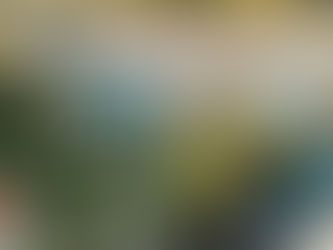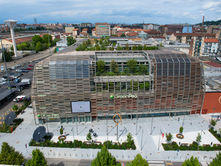top of page
All Articles


Green Artillery: How could railroads turn into humanistic green corridors?
Railroads are essential and indispensable modes of transportation in modern cities. These superstructures physically, socially, and economically connect various neighborhoods. However, these massive structures do not typically include appealing places where people want to spend their time in daily life. Recently, this trend has begun to change, driven by initiatives aimed at addressing the challenges posed by the physical barriers created by railroads.

Kaan Servi
Sep 254 min read


Slube hospitality: Redefining sustainable stays along Germany’s scenic routes
Slube is Germany's smallest hotel. Beyond its thoughtful design, Slube Tiny Village thrives thanks to its picturesque natural surroundings, which reinforce its identity as a hub for sustainable and slow tourism. The village’s locations—such as Zehdenick, Neustrelitz, and Greifswald—offer a direct connection to Germany’s lush outdoors and popular eco-routes.

Román Hernández
Sep 23 min read


Green dreams in Turin: The progressive architecture behind Green Pea’s sustainability-focused shopping experience
Green Pea is an ambitious project. Its architecture, materials, and storytelling make it a symbol of urban change, aligned with the environmental challenges of our time. Even if its large-scale impact is still developing and its message mainly reaches a specific audience, Green Pea fulfills a vital role as a demonstrative space. It inspires, educates, and raises new questions about the role of sustainability in our everyday lives. By merging commerce with consciousness, it in

Melanie Quesada
Aug 165 min read


From soil to soil: Mycelium’s journey in architecture
Mycelium is gaining traction in architecture and engineering as a highly sustainable and %100 biodegradable material with impressive qualities. It is not only fireproof and resistant to mold and water but can also be harder than concrete at the same weight. Its unique thermal properties allow for effective temperature regulation, and it serves as an excellent sound absorber.

Kaan Servi
Jul 13 min read


Downsize to thrive: The appeal of tiny homes in a crowded world
As urban centers grow denser and housing costs soar, an alternative living movement has taken root across the globe: tiny homes. More than a passing architectural trend, these miniature dwellings represent a shift toward intentional living, environmental consciousness, and design innovation.

Román Hernández
Jun 203 min read


ESG and design firms in Europe: Navigating client expectations amid regulatory demands
Clients of design and architectural firms across Europe are increasingly seeking partners who can contribute meaningfully to their ESG goals

Christiane Voigtländer
Jun 113 min read


Lessons from the past, solutions for the future: Designing low-impact buildings
The transition to sustainable design does not mean starting from scratch. It builds on principles that are not new in human history. Many cultures already applied passive strategies to adapt to their environment without the need for mechanical energy.

Melanie Quesada
Jun 53 min read


Vertikal Nydalen: Norway’s first naturally ventilated building sets a new standard for green architecture
Vertikal Nydalen, designed by Snøhetta in Oslo, is Norway’s first naturally ventilated tower, setting a new benchmark for sustainable architecture. Featuring offices, restaurants, and 40 homes, it operates on a “triple zero” model—no energy purchased for heating, cooling, or ventilation. With smart systems, low-carbon materials, and biodiverse terraces, it’s a pioneering example of human-centered, low-emission urban design.

The Greener Space
May 313 min read


Wander with purpose: Discovering sustainable design through global journeys
In the quiet corners of a desert village, in the shadow of an alpine roof, or beneath the filtered sunlight of a bamboo canopy, a traveler may find not just shelter, but a revelation. To travel is to learn. In particular, for designers and architects seeking to create a more sustainable built world, traveling is far more than an escape; it is a form of research, empathy, and reawakening. It offers various valuable insights that inform and enrich their design approach.

Sibela Hyseni
May 295 min read


Who owns AI-generated architectural design? Legal perspectives from the US, UK, and EU
Who holds the rights to AI-generated designs? How do existing copyright laws apply? And what regulatory frameworks are emerging?

Christiane Voigtländer
May 283 min read


Designing for climate and community in Melbourne: Ferrars & York advances low-impact residential development
Ferrars & York in South Melbourne sets a new benchmark for sustainable urban living — 22 all-electric residences designed by Six Degrees Architects and developed by HIP V. HYPE, where climate-conscious design meets community connection.

The Greener Space
May 192 min read


How architecture can work with nature: The vision of a Third Paradise
The four main elements—water, air, fire, and earth—can be experienced within the microcosm of Fallingwater. The adaptation of the structure to the surrounding topography makes it an inseparable part of the ecosystem. Residents, or nowadays museum visitors, can hear the gentle murmur of the water in the stair hall, relax to the sound of birds chirping on the terraces, feel the warmth of the sun streaming through the windows and skylights, and enjoy the fresh air revitalizing t

Kaan Servi
May 133 min read
bottom of page


